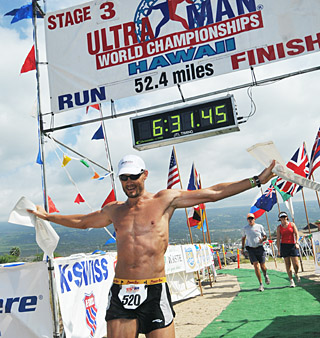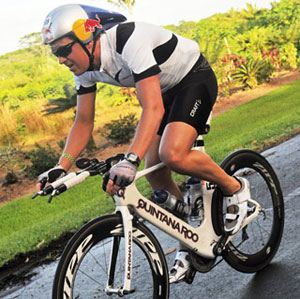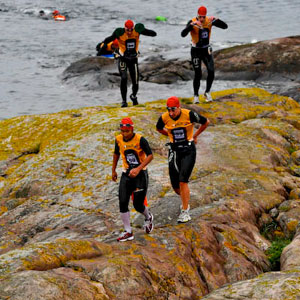Swimming Across Sweden
Swedish endurance star Jonas Colting has seemingly done it all throughout his career as an endurance athlete. While he started his career in the junior ranks in ITU-style events, he found his sweet spot in long distance racing where he was a two-time podium finisher at ITU Long Course Worlds, before cranking up the distance to ultras where he found success at many of the world's most challenging events like Ultraman, ÖTILLÖ and Norseman Xtreme. We caught up with the rock star Swede after he completed his most recent challenge, a point-to-point open water swim across his home country!
Slowtwitch: It has been a few years since your last interview with us but you visited Dan Empfield at Xantusia not too long ago. How have you been? Is most of your time spent in Sweden these days?
Jonas Colting: Hey! Thanks for catching up with me again. Yes, it's true it was quite some time ago I spent a longer period up at Slowtwitch HQ but I was there for a few days this spring. I was visiting my brother who now lives in Los Angeles and I went up a couple of times to ride my mountain bike with Dan.
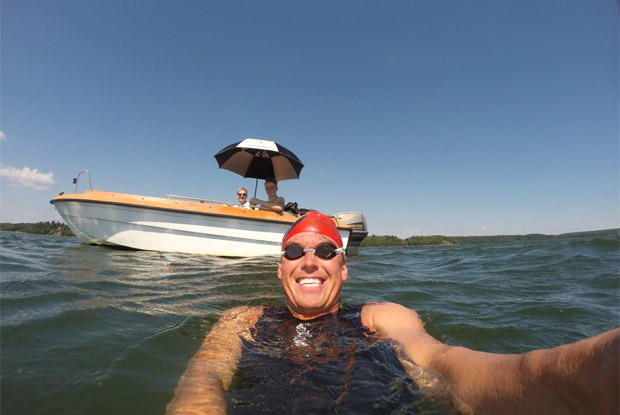
I haven't raced that much triathlon over the past years due to some injuries but I've done a fair bit of Swimrun racing and I did two MTB stage races this year, most notably the spectacular Cape Epic in South Africa. It was 700-kilometers over eight days and I was happy to finish and survive this extremely hard race. It was also the most fun I’ve ever had on two wheels!
I do spend most of the year in Sweden and in Borås, my home town. It's a great place for training as we have two 50 meter pools, lots of lakes, an abundance of trails and nature for running as well as great roads for cycling. In winter we have lots of ski tracks too which is really good as I've grown very fond of cross country skiing. Borås has about 100,000 people and is the perfect size to have good service but not having to spend too much time in the car getting caught in traffic. I do a lot of corporate health work, health seminars and public speaking and have written four books.
ST: What was your Cape Epic experience like? Was venturing into the mountain bike world a new experience?
Jonas: Yes, it was a totally new experience. I hadn’t really been on a mountain bike since 1996 and I obviously had a lot to learn. About everything! We rode the Andalucia Bike Race prior to Cape Epic and it was a very technical race course. I was happy to have survived. The Cape Epic went a lot better as I was fitter and a little bit more experienced. Still, our motto was survive and stay alive. It was just awesome though and stage race mountain biking is something I'd like to do a lot more in the future. It appeals to me to be riding point to point and having such a great diversity in challenges. Besides the technical aspects it was also very hard physically although I was slightly stronger than my partner who suffered a bit in the heat. Funny thing is that I was stronger on the final day than the first day which pretty much also was true with my six weeks of swimming.
ST: Speaking of which, you recently completed an incredible feat of endurance with your 600 kilometer Swim Across Sweden. Tell us how you came up with this idea? How did you train for it? How did you manage all the logistics demanded of you?
Jonas: It actually ended up being 640 kilometers long! I started on July 6th and finished on August 15th. I wanted to come up with an adventure and a challenge that no one had tried to achieve before. I’ve ridden my bike 2,200 kilometers from south to north in Sweden a few times. I’ve also done a few run adventures along the same line and in general I’ve always thrived on the "touring" aspect in training, even as a pro! I love going from point A to point B. However, it’s not very common to "tour" this way in the water, swimming!
Looking at a map of Sweden I realized that it would actually be possible to swim between the capital of Stockholm, located on the east coast, to the second largest city, Gothenburg, located on the west coast. I'd be swimming through lakes, sea coves, ocean, man-made canals and rivers and I'd be connected with water all the way across Sweden.
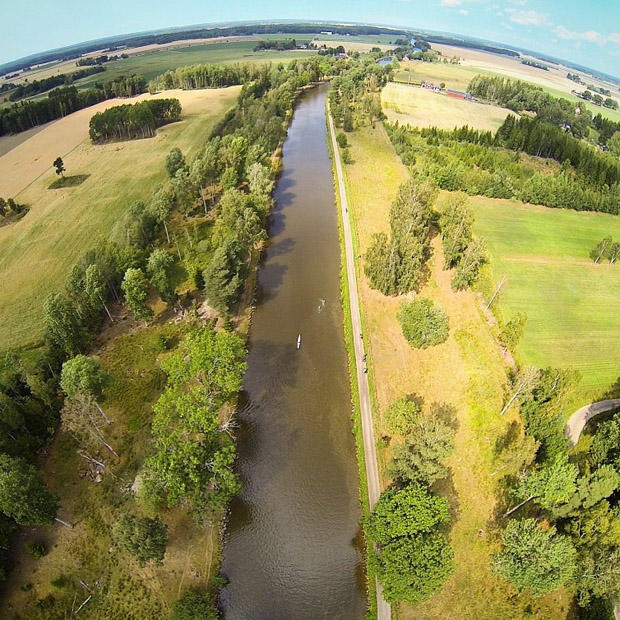
ST: What do you have to do to get ready for this epic?
Jonas: I didn’t train all that much extra for it. In October, I had two surgeries that slowed me down for a few months. I first removed a bone spur from my AC-joint and I didn’t swim further than two kilometers in any workout before Christmas. I also had some scar tissue removed from my hamstring attachment so all of last fall was basically spent in the gym or with the physical therapist doing rehabilitation. But once I had a clean bill of health I did a lot of skiing, weights and mountain biking as I had Cape Epic coming up.
My swimming was actually left on the back burner until late spring and I didn’t really get going in the pool until May. But since I’ve been swimming for 30 years I figured I'd be fine anyway. In June I did quite a lot of hard swimming. I didn’t swim very long but rather hard and intense. Most workouts were between 5km and 7km with hard intervals. A typical workout would be a mix of 50's, 100's and 200's mixing band, paddles and paddles with pull buoy. My best workout was 40×100 paddles on 1:25 long course meters, holding 1:08 average. I did almost no open water training. I had one big weekend where I swam six hard workouts, totaling 30,000 meters in three days.
ST: What about logistics?
Jonas: Training was one thing but the real work was done planning everything. Planning the stages. Looking at maps. Where does each stage begin and finish? Where would I need a boat to support me? Where is a paddle escort enough? Hotels, sponsors, team members willing to spend weeks of their summer watching me swim, equipment, time frame, vehicle including a trailer. A ton of stuff! And of course, organizing the charity which was really the most important thing of all.
ST: George Mallory said he wanted to climb Everest “because it is there.” Why did you want to do this swim?
Jonas: Early on I felt the need to bring a bigger purpose to my swim. A lot of times feats like these tend to become very self-serving, which of course is fine. But if I'm going to swim 640 kilometers anyway, why not try to use it for something good and worthwhile. And what is more natural for an endurance swim than water? I learned that one billion people lack access to clean water and sanitation and that´s how I came in touch with WaterAid and their work.
ST: What was the most challenging part of your event? Was there ever a point where you were knocked up against the ropes and ready to throw in the towel?
Jonas: Oh hell yes! We kept joking that there are "no easy days on Swimming Across Sweden" and that was certainly true! I swam 38 of the 41 days which is an average of 17 kilometers per day. I swam south, west and southwest and as the wind primarily blows to the east and north in Sweden during the summer, most days were in a head or side wind. And except for a few days in the end it was all still water, no current. The last week was the worst. I swam down Lake Vänern, the largest lake in Sweden, and we had a very strong headwind with big swells making it very difficult. It was rough enough that most boats didn’t want to go out and support. We had to beg and plead to find boat support. The same winds continued on the river where I had been looking forward to the only part of the swim where I supposedly would get to enjoy a current. But when the current meet headwinds there is this phenomenon where freak waves come over the top. Very rapidly and very steep, to the point where it's virtually impossible to swim. As I was very tired at this point and behind schedule I had a few emotional moments. Only because I had the best of support teams could I keep swimming. We did have a very warm summer so the waters were very warm. I'd rather be too cold than too warm so I swam probably 600 of the 640 kilometers in a HUUB Fastskin and not in a wetsuit. During that last week though, temperatures plummeted terribly and I got very, very cold. I was in the water eight hours on one of those days, covering 33 kilometers!
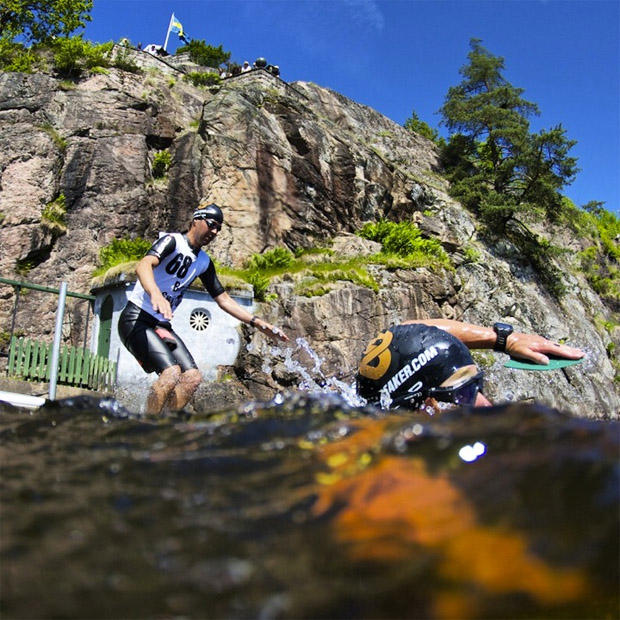
The funny thing though is that I got more fit than tired during these six weeks. I was worried my shoulders and back would give out but the more I swam the better I felt. It just goes to show the power of movement and circulation. The only physical problems I had was a stiff neck and upper back from having to lift my head in the rough conditions, and I had quite a few chiropractic sessions along the way.
ST: We read you raised over $100,000 for a charity called WaterAid. Can you tell us about that project and why it means so much to you? Did their organization support you throughout your efforts in terms of publicity or other assistance?
Jonas: We worked extensively through media and social media spreading the word about my swim and the charity. We had a website where people could donate money and a cell phone service where you could text your donation. We had banners and a stage which we put up at various stops along the way to raise awareness. I'm very proud that we managed to raise this much money in just six weeks! That means just as much to me as actually finishing the swim. This amount will give 3500 people permanent access to clean water and sanitation!
ST: We caught wind you're once again training for one of the toughest one-day sporting events in the world, ÖTILLÖ, taking place this upcoming Monday. It's a race you've won a few times before. What makes this race so special?
Jonas: It's spectacular! It began in 2006 as a very grass root-like event with only a few teams entered. Me and my friend were one of those teams. And I’ve been coming back every year which makes this my ninth time (Colting is a three-time winner of ÖTILLÖ). In 2010 I won together with Gordo Byrn, one of my fondest memories ever! It blows my mind to think that in this short period of time this race now has an international reputation, getting on the front page of New York Times and is ranked by CNN as one of the ten hardest one day races in the world. And it's now one of the hardest races to even get in to with a limit of 115 teams (2-person teams).
ÖTILLÖ is just so rugged. With a total of 10 kilometers of swimming and 65 kilometers of running over this course in the wild Stockholm archipelago, the constant changing between swimming and running, swimming in shoes and running in your modified wetsuit, bushwhacking through the terrain, it's just beautiful! Although most competitors will have also done triathlons it's a completely different thing than an Ironman. For one, it's more laid back. But don't confuse more laid back with easier, because it's not! It's just different!
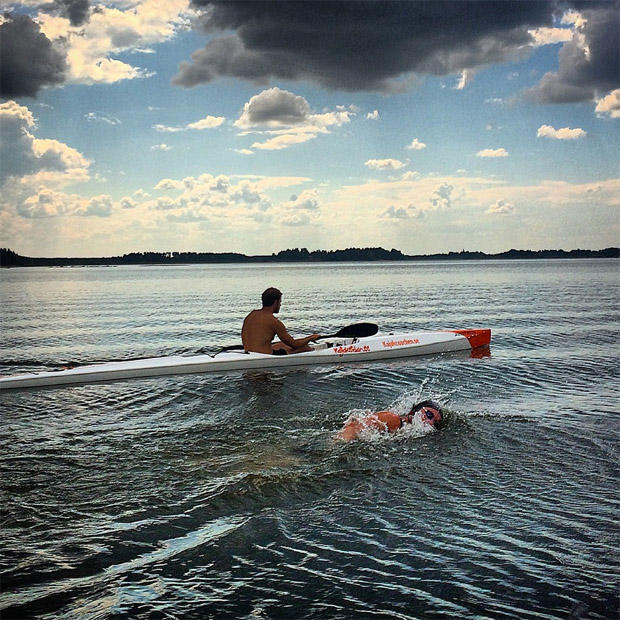
ST: We heard your partner in this year’s event is Rasmus Henning. How are the two of you approaching this event? To win, for the camaraderie, or both?
Jonas: I've known Rasmus for a long time and obviously he's one of the last decade’s best triathletes with great results in both ITU and Ironman racing. I’ve talked to him in the past about partnering up to do ÖTILLÖ and finally this year he was able to commit. We're happy to race together with a realistic approach of finishing well but probably not for the top spots. I haven't run for a few months and won't be able to run as well as it requires to win. But I'm sure we'll have a great time nonetheless!
ST: You now produce your own SwimRun event in your hometown of Boräs. Tell us about that event.
Jonas: Yes, I have my own race! It's a very hilly Swim-run totaling 6 kilometers of swimming and 27 kilometers of running over 12 swims and 13 runs. The course basically rotates around and across our largest lake in town. The run has about 3500 feet of vertical gain. We had 95 teams in our inaugural race in June.
ST: It appears Swim-run is a cultural phenomenon in Sweden and across Scandinavia. In your experience, how is Swim-run different from aquathlons put on in the US and other countries?
Jonas: Swimrun has totally taken off in Sweden and we probably had 25 events this year. People love the diversity of the courses, the team concept and the fact that just finishing is good enough! A typical aquathlon consists of a run and a swim on a beach, raced individually and in a triathlon suit. A Swimrun is much longer with many swims and runs. ÖTILLÖ has 20 some runs and as many swims totaling 10 kilometers of swimming and 65 kilometers of running. You also race as a team with a friend. The courses are generally much more rugged and off road, although marked. You wear a modified wetsuit with cut off arms and legs just above knees and elbow and swim in your shoes. It really is an amphibious race. It's a bit like comparing a normal triathlon to an Xterra.
ST: You're an author. For those of us who cannot speak or read Swedish, can you tell us what the contents of your book were about? How did it go over in Sweden?
Jonas: I've written three books on health and lifestyle, one of which is a cookbook. The most popular book is named "Naked Health" with a message of promoting a more primal and active lifestyle. I also wrote the first Swedish book on triathlon last year.
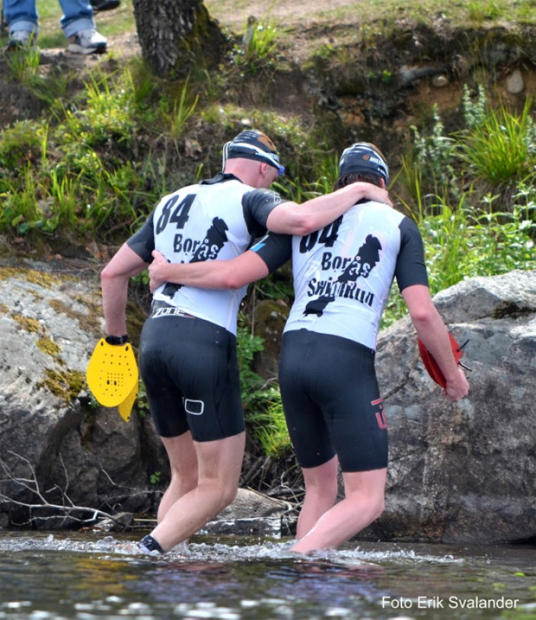
ST: Do you have an idea of what you'll be doing next?
Jonas: I'd like to write another book soon and also train and race a decent Ironman again. I don't really plan that much ahead and I don't have a long term plan with anything. I want to inspire people and keep myself inspired at the same time. I believe that great physical challenges bring out the best in all of us so I want to continue to be an advocate and a role model in that respect, through my own events, my training, adventures and public speaking. My big role models are Gordo Byrn and Mark Sisson who both, in their own ways, inspire a lot of people with their knowledge and work.


